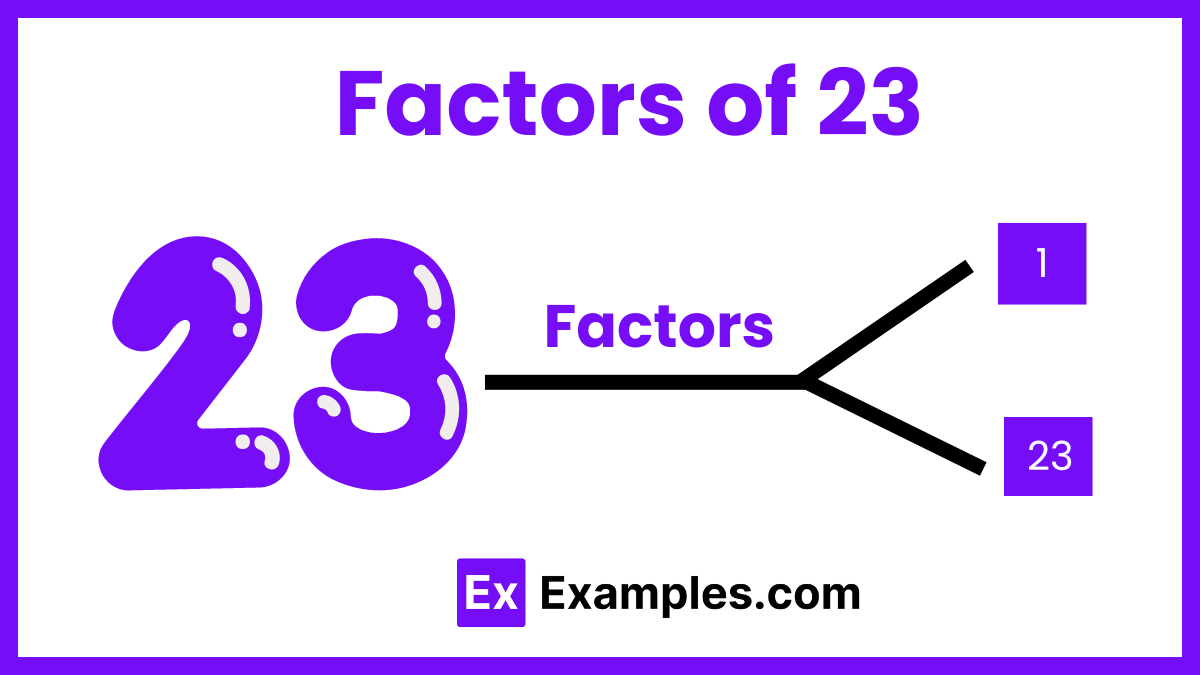What is the factor of 23?
2
3
5
23

The factors of 23 is crucial in grasping fundamental mathematical concepts. Factors are numbers that can be multiplied together to yield another number. In the case of 23, the factors are quite simple due to its nature as a prime number. This means it can only be divided evenly by 1 and itself, with no other divisors. Recognizing the factors of 23 helps in various applications, from simplifying fractions to solving equations. This guide will delve into what makes 23 a prime number, its positive and negative factors, and their significance in mathematics.

The factors of 23 are the numbers that divide 23 exactly without leaving a remainder. Since 23 is a prime number, it has only two factors: 1 and 23. This means that the only numbers that can be multiplied together to equal 23 are 1 × 23. There are no other pairs of factors for 23. Understanding that 23 is prime is important in various mathematical contexts, such as simplifying fractions and solving algebraic equations.
These pairs illustrate the limited factor pairs for 23, confirming its status as a prime number.
Calculating the prime factors of a number involves breaking it down into its prime components. Prime numbers are those greater than 1 that have no divisors other than 1 and themselves. Since 23 is a prime number, its prime factorization is straightforward. Here’s how to determine the prime factors of 23:
The factors of 23 can aid in various mathematical tasks, especially given its nature as a prime number. Here are some helpful tips for working with the factors of 23:
The prime factorization of 23 is simply 23 itself, as it is a prime number and cannot be divided by any other numbers except 1 and 23.
To verify that 23 is a prime number, check its divisibility by all prime numbers less than its square root (approximately 4.8). Since 23 is not divisible by 2, 3, or 5, it is confirmed to be prime.
A16: The GCF of 23 and any other number is either 1 (if the other number is not a multiple of 23) or 23 (if the other number is a multiple of 23).
23 is a prime number because it has only two distinct positive divisors: 1 and 23.
Any multiple of 23 is divisible by 23. For example, 46, 69, and 92 are all divisible by 23.
The sum of all the factors of 23 is 1 + 23 = 24.
Text prompt
Add Tone
10 Examples of Public speaking
20 Examples of Gas lighting
What is the factor of 23?
2
3
5
23
Which of the following is not a factor of 23?
1
23
4
2
What is the greatest factor of 23?
1
2
23
12
How many factors does the number 23 have?
2
3
4
1
Which number is not a factor of 23?
1
23
15
2
Which of the following numbers, when divided by 23, leaves no remainder?
46
20
30
35
Which number is both a factor of 23 and a multiple of 1?
1
2
5
4
Which of the following is the smallest factor of 23?
1
2
5
23
Which number is exactly half of 23?
11.5
12
10
23
What is the result of multiplying the factors of 23?
23
1
46
24
Before you leave, take our quick quiz to enhance your learning!

